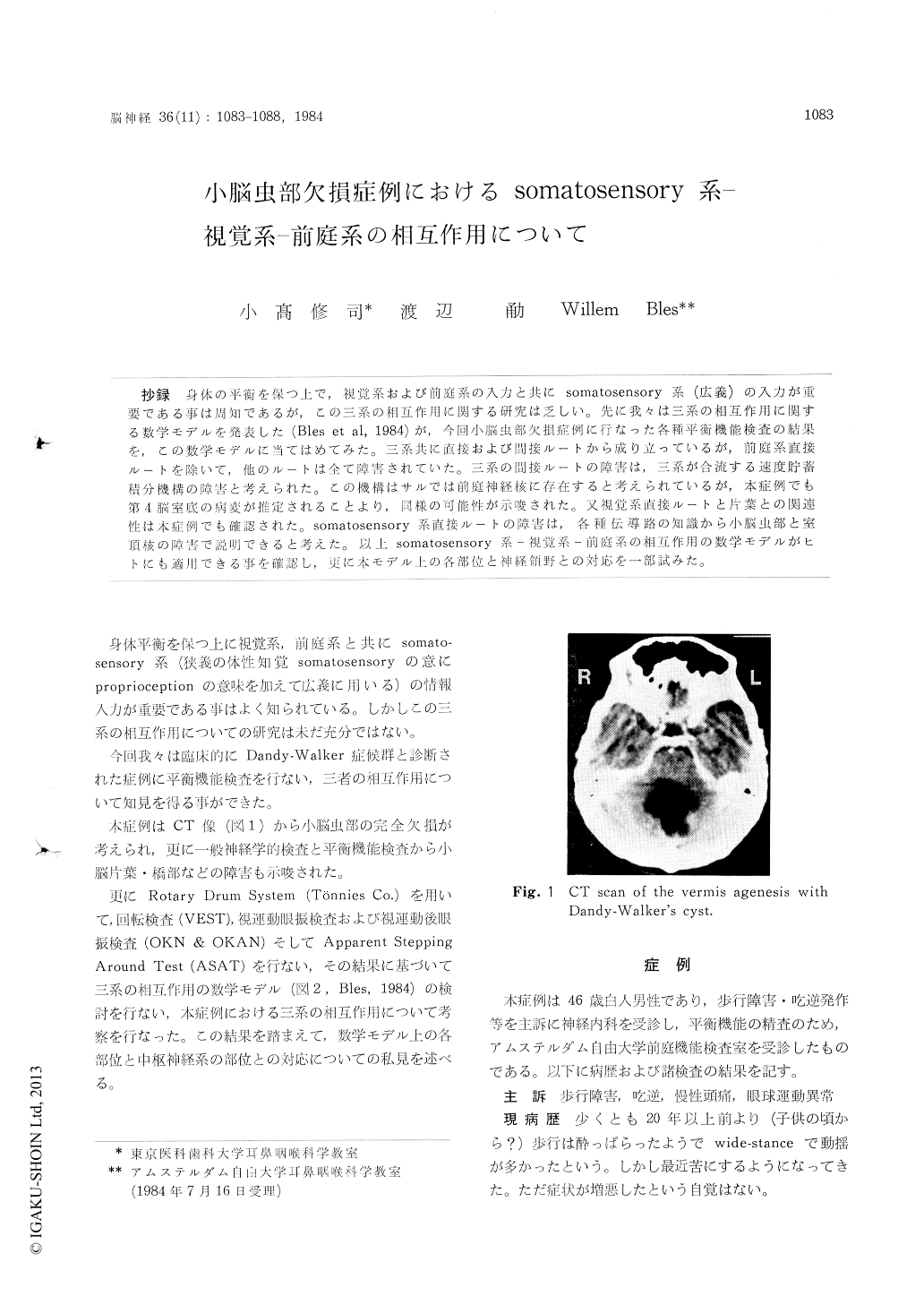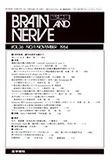Japanese
English
- 有料閲覧
- Abstract 文献概要
- 1ページ目 Look Inside
抄録 身体の平衡を保つ上で,視覚系および前庭系の入力と共にsomatosensory系(広義)の入力が重要である事は周知であるが,この三系の相互作川に関する研究は乏しい。先に我々は三系の相互作用に関する数学モデルを発表した(Bles et al, 1984)が,今回小脳虫部欠損症例に行なった各種平衡機能検査の結果を,この数学モデルに当てはめてみた。三系共に直接および間接ルートから成り立っているが,前庭系直接ルートを除いて,他のルートは全て障害されていた。三系の間接ルートの障害は,三系が合流する速度貯蓄積分機構の障害と考えられた。この機構はサルでは前庭神経核に存在すると考えられているが,本症例でも第4脳室底の病変が推定されることより,同様の可能性が示唆された。又視覚系直接ルートと片葉との関連性は本症例でも確認された。somatosensory系直接ルートの障害は,各種伝導路の知識から小脳虫部と室頂核の障害で説明できると考えた。以上somatosensory系—視覚系—前庭系の相互作用の数学モデルがヒトにも適用できる事を確認し,更に本モデル上の各部位と神経領野との対応を一部試みた。
It is well known that the somatosensory input is important for keep a balance as well as the visual and the vestibular inputs.
However the knowledge of somatosensory-visual-vestibular interaction is incomplete at now. We have already made a mathematical model of these interactions by extension of the Raphan-Cohen model (Raphan et al, 1979) for visual-vesti-bular interaction with a direct and an indirect somatosensory pathway. This indirect somatosen-sory pathway has access to the common visual-vestibular velocity storage integrative mechanism.
So the purpose of the present experiment was to verify whether such an extended mcdel (Fig. 4) can be used to describe the nystagmus due to stimulation of the sensory system apart or in com-bination in case of vermis agenesis with Dandy-Walker's cyst.
It was checked, on the other hand, where the lesion are extended. And moreover it was suspect-ed that each parts of the mathematical model are compared with any central neural regions.
As a result, the indirect pathways of visual, vestibular and somatosensory inputs and the direct pathways of visual and somatosensory inputs were disturbed completely. The disturbance of the in-direct pathways was caused by lesion in the velo-city storage integrator which was thought to be included in the vestibular nuclei in monkey.
The lesion in .Σ3-h2 was suspected to explain a blockage of the direct visual pathway, and a dis-turbance of the direct somatosensory pathway was suspected the lesion in gs.
We could explain this case by a mathematical model for somatosensory-visual-vestibular interac-tion, so we could conclude that this model was useful for human beings as well as monkey.
The extension of lesion came to surroundings of fourth ventricle, flocculus and vermis.
We thought that vermis and/or fastigial nucleus were important as a relay parts in the crossed spino-reticulo-cerebellar tract, the dorsal spino-cerebellar tract and the cuneo-cerebellar tract.
As the integrative mechanism (fdt-ho) in model is included in vestibular nuclei, so s, in model is included in vermis and/or fastigial nucleus and Σ3-h2 in model is included in flocculus in human beings.
Finally, in this case, only the direct vestibular pathway works to produce the nystagmus, which means only this pathway is useful for the soma-tosensory-visual-vestibular interaction.

Copyright © 1984, Igaku-Shoin Ltd. All rights reserved.


